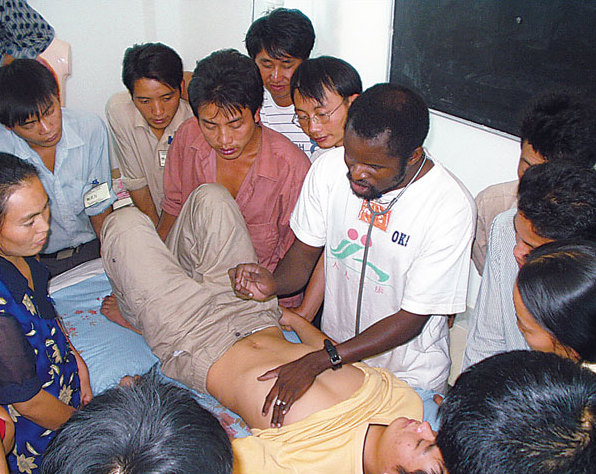Healing touch
|
Boubacar trains a group of doctors for rural clinics from different parts of Yunnan province. |
Since Diarra arrived in Yunnan in 1999, he has treated at least 5,000 leprosy and AIDS patients, and trained 1,140 doctors for rural clinics in Honghe, Lijiang city, and Nujiang Lisu autonomous prefecture. Diarra also distributes medicine and healthcare necessities donated by the World Health Organization, via a nonprofit organization in Italy. The WHO has made a multi-drug treatment for leprosy available worldwide since 1995.
| Portraits from afar |
| Mystery beneath |
Historical texts suggest leprosy was first identified in the ancient civilizations of China, India and Egypt, according to the World Health Organization, but the disease was officially eliminated at the national level in China in 1982. That means there is less than one case per 100,000 population, but in subtropical pockets of the country's southwest, the condition lingers.
Historically, leprosy patients were ostracized by people in their communities, who were fearful because the disease was incurable and falsely thought to be highly infectious. Various health authorities estimate that there are 200,000 people in China today who have recovered from leprosy, but the majority remain disabled, with conditions ranging from blindness to amputated fingers, arms and legs.
Caused by a bacterium, leprosy is passed via respiratory droplets among people in close and prolonged contact. Such transmission is rare, as 95 percent of people are naturally immune.
Leprosy affects the skin, mucous membranes, peripheral nerves and eyes. With early diagnosis and treatment, however, the disease leaves no traces. There are about 3,500 active cases today, but a lack of reporting due to the social stigma remains a big challenge today. In remote areas, sufferers are still spurned by their families and continue to live in isolated communities with others with the disease.
Lacking medical knowledge, most leprosy patients don't know how to cure the disease, Diarra says. Some of them try to stitch the broken skin that has dried up and split, but that just makes the condition worse. Diarra says sufferers should moisten the body with clean water or cream as much as they can.



















